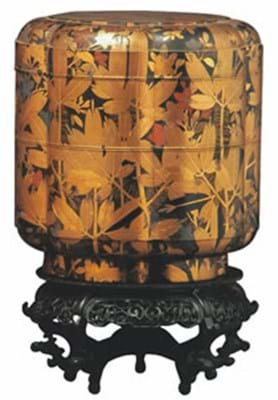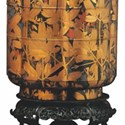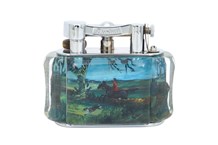The 250 lots came from the former Musée Clemenceau in Moret-sur-Loing, a pretty village near Fontainebleau once inhabited by Alfred Sisley.
The museum was housed in a thatched cottage called La Grange Batelière, built in the late 1920s by Clemenceau's son Michel. President Clemenceau, a driving force behind the more controversial terms of the 1919 Versailles Treaty, died just before the cottage was completed.
However, it became a shrine to his memory through Michel's widow, Madeleine, who died last year.
The regional council has acquired the cottage but does not intend to maintain it as a museum: there is also a Clemenceau Museum in Vendée, at St-Vincent-sur-Jard (on the Atlantic Coast) where he lived at the end of his life, as well as a Clemenceau Foundation in Paris.
Both these institutions bought extensively at the sale, as did the Mairie of the 18th Arrondissement in Paris (Clemenceau was Mayor of Montmartre in the 1870s).
The Tiger's souvenirs ranged from photographs, medals and documents to his reading glasses, mayoral sash and bamboo walking stick, which made €3400 (£2360).
Asian buyers were also active, attracted by Clemenceau's penchant for Japanese art - said to have been inspired by his friend Claude Monet.
Clemenceau's collection of more than 3000 Japanese incense boxes was donated some years ago to the Montreal Museum of Fine Arts, but there were several examples of 19th century lacquer work on offer here.
They included a round box with floral patterning, 16in (40cm tall), that made €4000 (£2780); and a palisander cabinet, adorned with birds, clouds and foliage in different shades of gold lacquer, that sold at €4100 (£2845).
The sale's top price of €58,000 (£40,280) went to a picture which Clemenceau commissioned from Paul Jouve: a large gouache and gold-lacquered view of Eléphants Sacrés devant Angkor, 4ft 7in x 6ft 5in (1.40 x 1.95m).
A richly carved baroque doorcase found a Minneapolis buyer at €30,000 (£20,830), just half the top estimate.
The doors were flanked by two 6ft 3in (1.9m) female figures, probably made in the southern Netherlands around 1700 but doubtless integrated into the ensemble at a later date.
Institutions rally to the memories of Clemenceau
Georges Clemenceau (1841-1929), the First World War leader known as The Tiger, and also famous as the editor of L’Aurore, who published Zola’s J’Accuse at the height of the Dreyfus Affair, was the subject of an unusual sale at Osenat (15% buyer’s premium) in Fontainebleau on February 13.








